Oceans rise, houses fall: The California beach dream home is turning into a nightmare
CALIFORNIA – Tyree Johnson loved his apartment that overlooked the Pacific Ocean – until it started to crumble down a cliff into the sea.
For 15 years, he could enjoy sunsets over the water from his back porch in Pacifica, a few miles southwest of San Francisco.
Pods of dolphins swam by and hang gliders floated overhead. But all that splendor came with a risk: The bluffs were weakening, and the ocean was gnawing away below.
“In that last year, it just started giving way,” he says. "It wasn’t a gradual thing.”
When a loud noise startled him around 4:30 in the morning, it was the ground giving out a few doors down. In April 2010, authorities told him he needed to move before the whole building fell into the ocean.
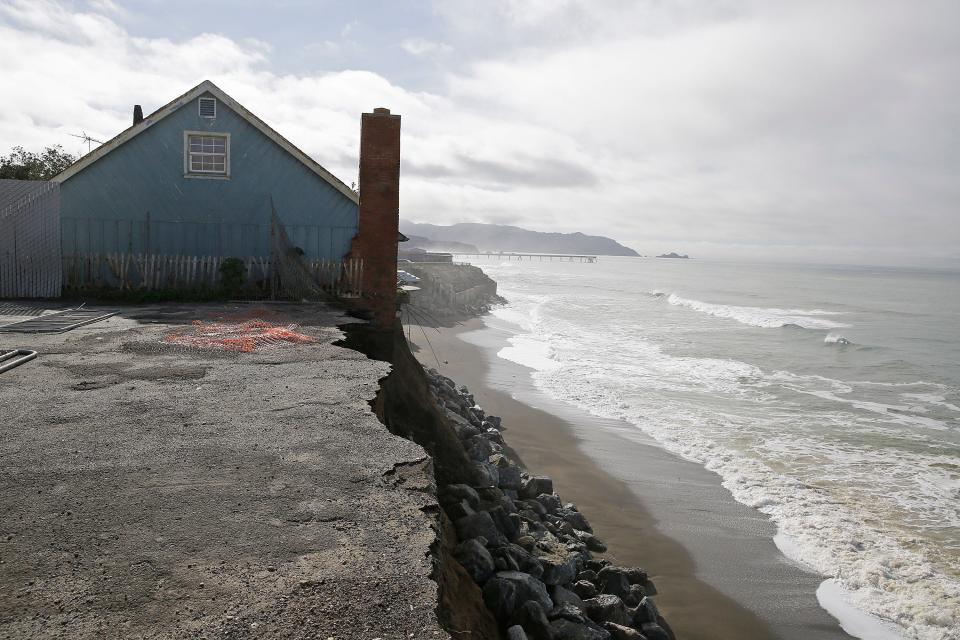
A decade later, a UCLA report warned that Johnson’s story will not be unique: Tens of thousands of people who live along California’s coast may be forced to flee in coming decades as climate change leads to rising seas and makes swaths of the state’s iconic coast uninhabitable.
So far, those risks haven't ruined the dream of California beach living. Houses teetering near the edge of cliffs are still valued at millions of dollars.
Meanwhile, the ocean keeps rising.
SEA LEVEL AND HIGH TIDE FLOODING: Feds warn water levels are 'nearing the brim.'
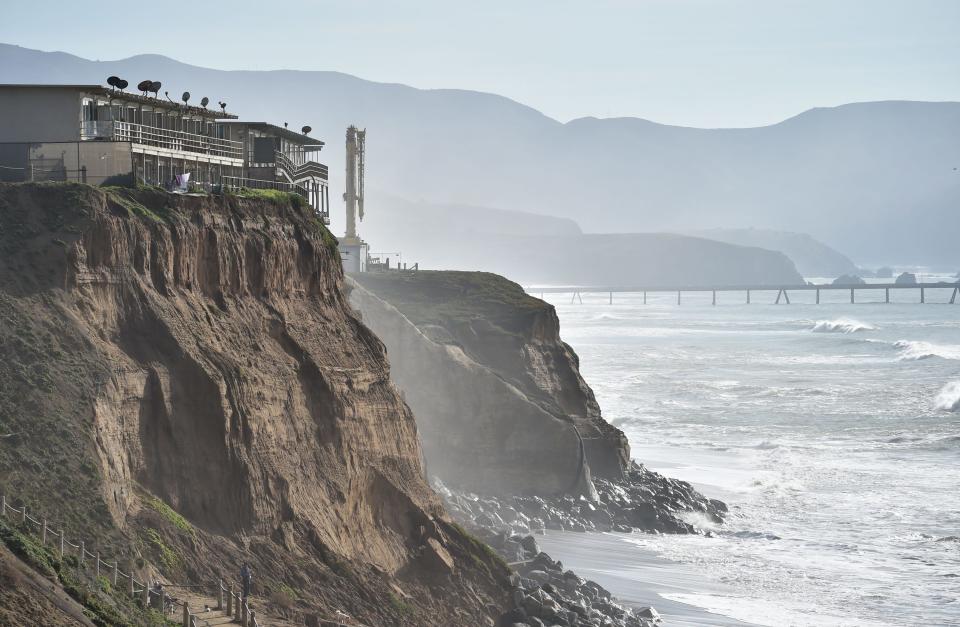
Some California beach homes face 'inevitable' fate
No fear of hurricanes, beautiful views, perfect weather – that's the promise of coastal living in California. Cliffs cover most of the state's coastline, giving the most desirable locations an expansive, panoramic view of the ocean.
“The coast is what sells California ... it’s part of who we are," says Carla Farley, board member of Greater San Diego Association of Realtors and Smart Coast CA, a group that advocates for property rights on coast-related issues.
CALIFORNIA FLOOD: A disastrous 'megaflood' flood in sunny and dry California? It's happened before
'IT COULD HAPPEN TOMORROW': Experts know disaster upon disaster looms for West Coast
It all comes at quite a cost: Billions of dollars' worth of houses line the coast, the UCLA report found. Though not every coastal home is owned by a millionaire, property values generally skyrocket closer to the ocean – no matter the danger.
Sea level rise isn't just a California problem. A government study in March said tens of thousands of homes will be vulnerable in the next 100 years in other locations: Miami, Atlantic City, New Jersey, and Galveston, Texas.
Even President Joe Biden's beach house in Delaware is at risk, according to CNN.
But the danger posed by rising seas is especially obvious in California, where bluff collapses have killed beachgoers and clifftop homes can rapidly become unsafe as the ocean batters the coast below. Low-lying coastal areas aren't immune either as flooding risks grow.
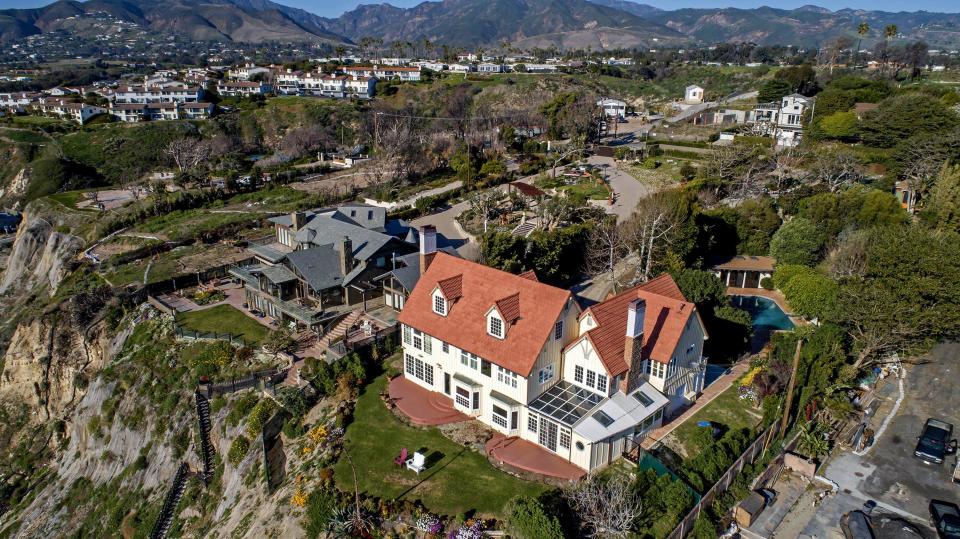
Homes owned by celebrities cling to cliffs, and chain-link fences hold back falling rocks in Los Angeles County's idyllic Malibu, where the Santa Monica Mountains meet the Pacific Ocean.
In 2020, actor Anthony Hopkins sold his Malibu mansion for about $6.7 million more than he paid for it in 2001. That's despite the house sitting at the edge of a bluff that was seriously eroded – and the home next door burning down in a fire.
To the south, the ocean is encroaching on the laid-back beach town living in San Diego County. Signs warn beachgoers to stay back from the cliffs on Torrey Pines State Beach, where shore access is often cut off at high tide as the ocean beats against the cliffs.
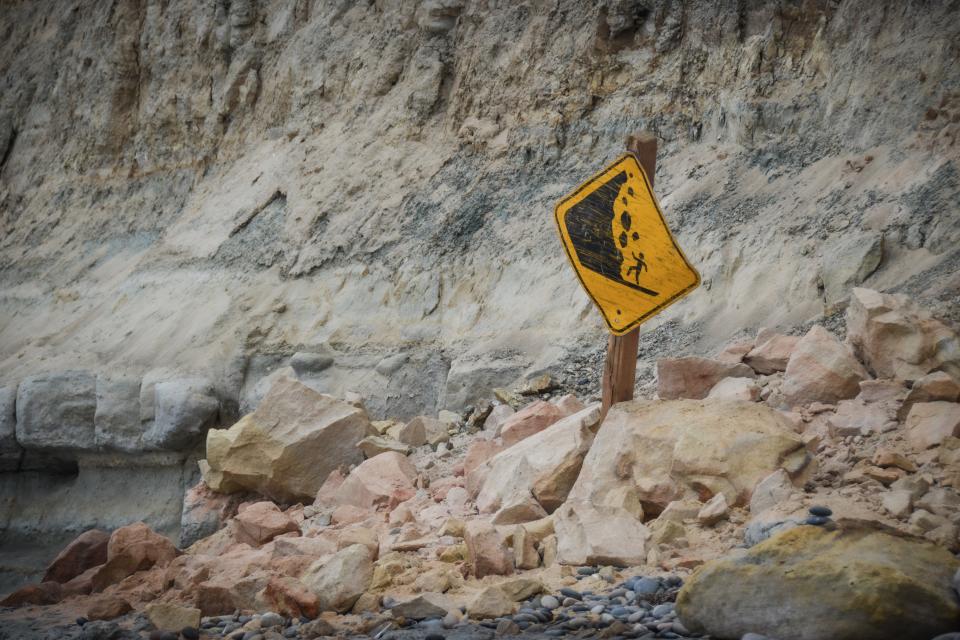
The danger is real: A few miles up the road, a bluff collapse killed three beachgoers in 2019.
The bluffs in San Diego County cities hold up mansions, condos and a railroad that hugs the coast along the prestigious beachfront city of Del Mar.
It has always been a precarious location – erosion and tides are natural events that always change the landscape of the coast. Bluffs weaken through a variety of factors, not just rising seas.
But as sea level rise projections grow more dire, experts now say permanently living on the ocean edge isn't sustainable. Authorities are already making moves to retreat: Plans to move Del Mar's railroad tracks inland are in motion – at the cost of hundreds of millions of dollars.

For the most at-risk communities – places like Del Mar and Pacifica – it's hard to “imagine anything but the inevitable need to slowly move that neighborhood back,” says Charles Lester, director of UC Santa Barbara's Ocean and Coastal Policy Center in the Marine Science Institute.
Lester, a former director of California's Coastal Commission, says those kinds of changes will unfold over decades.
But even so, the notion of phasing out at-risk coastal neighborhoods can be politically toxic – especially when many of those homes cost millions of dollars.
“Wealthy people who live right on the sand ... have just freaked out,” says Del Mar Mayor Dwight Worden.
He says there are plenty of ways to keep the sea at bay for decades. But the state's long-term plans have signaled the government was envisioning a future in which some at-risk homes no longer exist – and that has caused "hysteria" among homeowners.
RISING SEAS: High tides to swamp $34B in US real estate in just 30 years
'It’s going to get worse'
Tyree Johnson describes a sense of resignation when the ocean came for his apartment. It was an affordable place to live, not a castle to defend.
He remembers a brief, futile effort to shore up the cliff – then authorities stepped in before someone got hurt.
That's the nightmare scenario that homeowners, cities and coastal planners are trying to avoid as more homes are threatened.
CLIMATE CHANGE: Patagonia founder gives company away, future profits aimed to help fight climate crisis
REPORT: World is 'heading in the wrong direction' on climate change, UN report warns
They often disagree about what should be done next.
For those living on the coast – or wanting to live there – the solution often seems clear: Keep the status quo and enjoy life at the beach.
“We don’t think the sky is falling at this moment," says Farley, whose organization has argued property owners should be given more freedom to guard their homes from rising seas.
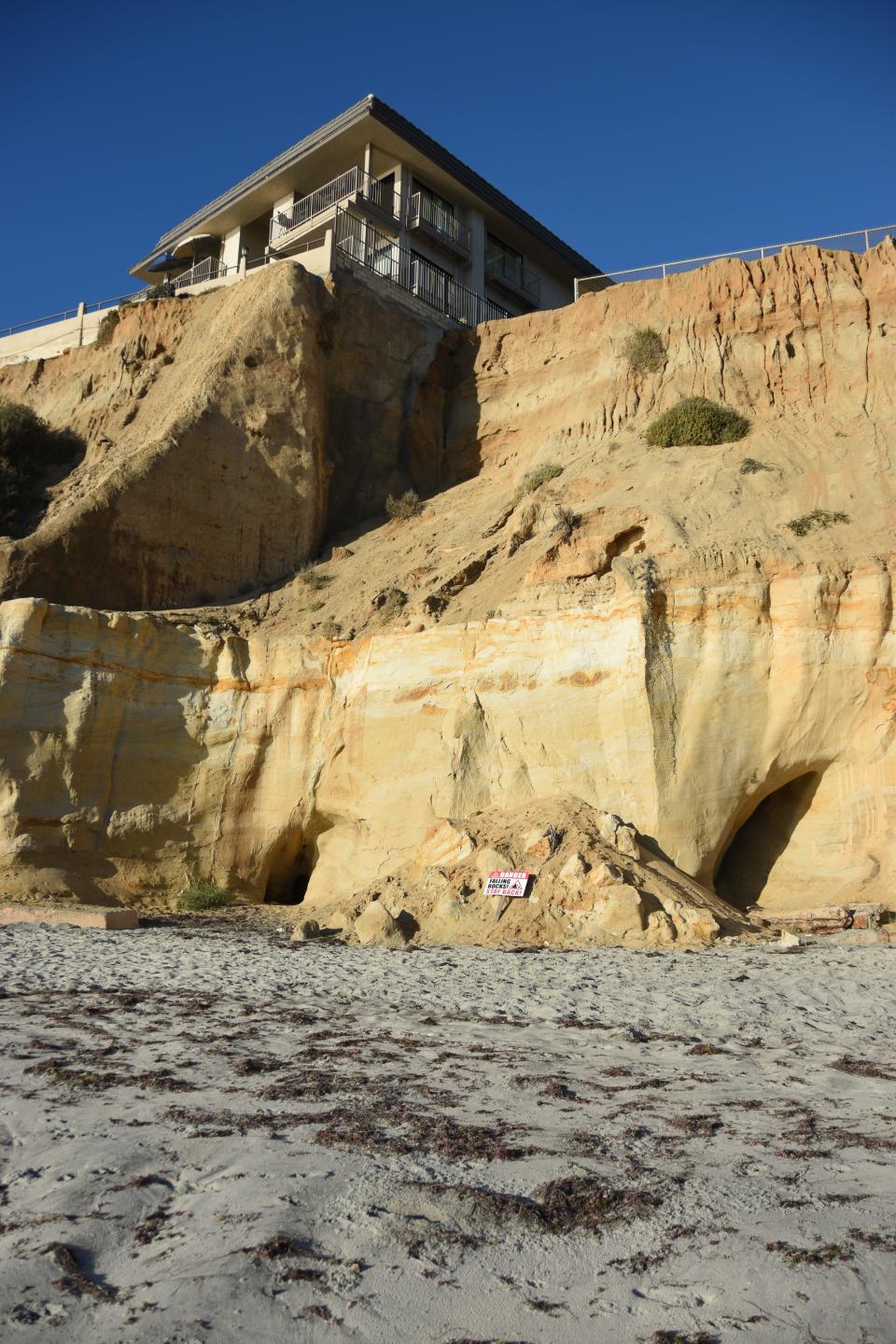
Farley says new homeowners should be notified of the risks because level rise is real. But it's a gradual problem that can in most cases be fended off for decades, she says.
Buyers should know what they're getting themselves into, and homeowners should be allowed to protect their property, according to Farley. The nightmare scenario for these homeowners is government regulation preventing them from saving their houses.
In practice, coastal planning experts fear that often means armoring bluffs – essentially plastering them with concrete so they can better withstand higher surf.
But those experts say littering the coast with concrete doesn't solve the problem of sea level rise. It often makes things worse.
For one thing, if cliffs are frozen in place, the beaches below will gradually disappear as the sea rises.
“We want a beach that people can recreate on,” says Kelsey Ducklow, a coastal resilience coordinator at California Coastal Commission.
The commission says California law requires it to protect the state's beaches. And it wants communities all along the coast to begin planning for what happens as the ocean slowly endangers more homes.
"It’s going to get worse in coming decades,” Ducklow says. “There’s a lot at stake.”
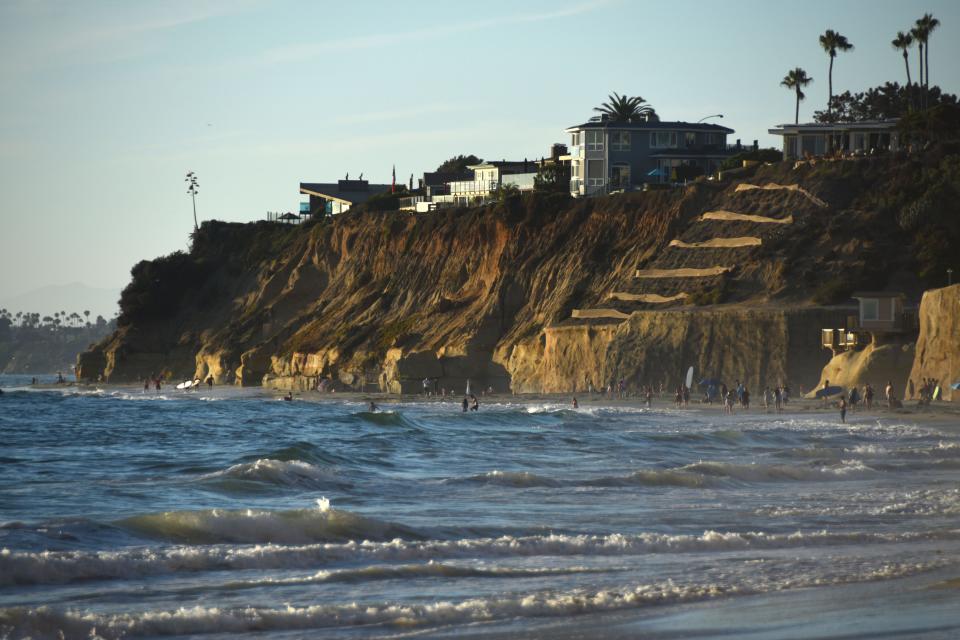
Homeowners fear what's next
Residents in Del Mar seemed a little worried about sea level rise and a lot worried about what would happen to their homes at a tense City Council meeting in 2019 about California's plan to manage sea level rise in their community.
The state says “we all need to pack up and move somewhere else, because sea level rise is coming," says resident Julie Hamilton. "And I don’t think that’s what this city wants to do.”
At issue was a long-term plan for how the community would manage rising sea levels. The state was planning for a future in which homes on the edge may need to be phased out. The city wasn't.
The city and state sparred on issue after issue, with Del Mar officials saying their plans for sea level rise were extensive, backed by science and would allow for more gradual change along the city's coast.
HEAT WAVES: Dramatic increase in deadly US heat waves now likely inevitable, but experts say there's still hope
GRAPHICS: Map shows at least 44 states lack universal air conditioning in their prisons
“They’re asking us to plan now for an extreme event, and it’s unnecessary," says Amanda Lee, the town's principal planner, of the state's position on how high at-risk buildings will need to be, which she said is even more strict than the federal standard that Del Mar follows.
But coastal planning experts often say their focus is on avoiding a crisis – whether it comes months, years or decades down the road – not maintaining the status quo.
“We can see these impacts coming. ... Do we wait until the moment of disaster strikes?” asksd Julia Stein, deputy director at UCLA Law's Emmett Institute on Climate Change and the Environment.
Stein joined other experts in emphasizing that the coast changes the most during extreme weather events, like unusually heavy rainfall in California. That means stable cliffs can quickly become unstable, unstable cliffs can quickly collapse.
The state has spent about $12 million on grants designed to help communities map out their plan for rising seas, but so far only six have been completed and approved by the state. Dozens of others are in progress.
Ducklow says the commission doesn't want to force thousands of people from their homes – that's not necessary yet and in some cases it may never be.
But pretending that all homes along the coast will be safe in perpetuity is wrong and dangerous, Ducklow says.
As communities finalize their plans for the coming decades, elaborate attempts to slow the ocean's progress will continue. Among the most common: the expensive task of moving tons of sand to refresh worn-out beaches.
But Stein says it's all a stalling tactic that puts off and complicates longer-term solutions: “Kicking the can down the road.”
Contributing: Christal Hayes
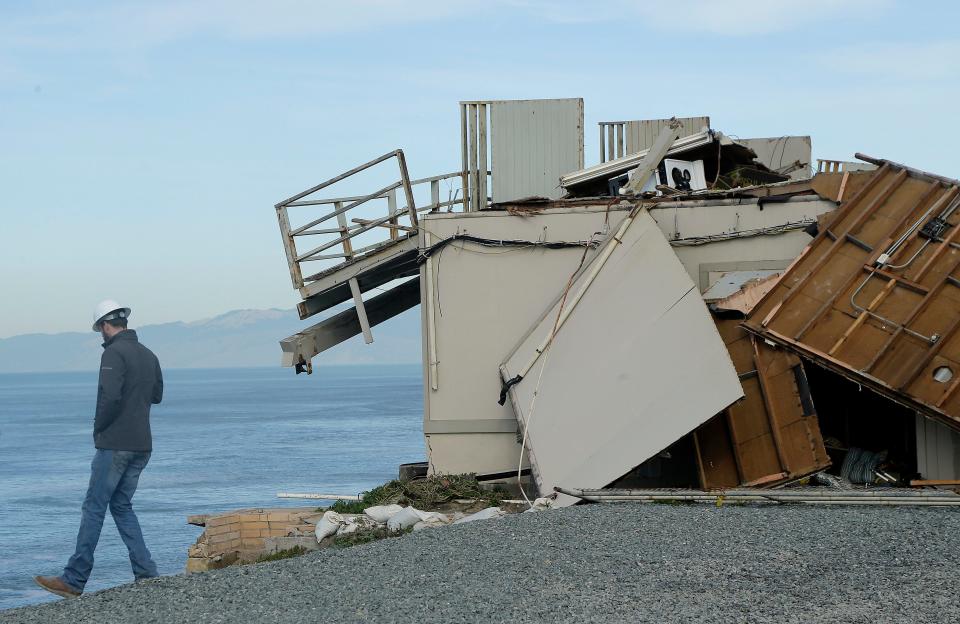
This article originally appeared on USA TODAY: Climate change and sea level rise threaten California beach living

 generic
generic 